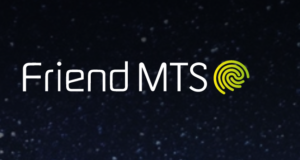
Friend MTS: An End-to-End Content Protection Approach
From fingerprinting and watermarking, to advanced subscriber identification, Friend MTS makes its mark as a content protection leader by offering platform, channel and content protection services, offering a full suite of managed services that helps pay TV operators, rights holders and broadcasters control wherever their video content flows.
Brad Parobek, SVP of sales, Americas for Friend MTS, spoke with MESA about how his company goes about providing protection for live and non-live content across broadcast and OTT, how the pandemic has impacted the piracy landscape, and the emerging content protection challenges his company sees on the horizon.
MESA: How did Friend MTS first come on the scene, what was the impetus for the company?
 Parobek: At the helm of Friend MTS is founder and CEO Jonathan Friend, who turned his passion and knowledge for technology and entertainment into a company that is dedicated to protecting premium live and on-demand content from illegal redistribution. Friend MTS works with the world’s largest media companies, including content owners, broadcasters and operators.
Parobek: At the helm of Friend MTS is founder and CEO Jonathan Friend, who turned his passion and knowledge for technology and entertainment into a company that is dedicated to protecting premium live and on-demand content from illegal redistribution. Friend MTS works with the world’s largest media companies, including content owners, broadcasters and operators.
Jonathan is widely recognized as a pre-eminent thought leader in the field, and his strategic vision has grown the company from a UK-based business with two employees to an international business with offices around the world.
Founded in 2000, Friend MTS is headquartered in Birmingham, UK and Philadelphia, Penn., with operations throughout Europe, the Middle East, Africa, Latin America and North America. Friend MTS has always played a crucial role in social responsibility — gifting organizations like the U.S. Department of Homeland Security and the International Center for Missing and Exploited Children (ICMEC) with the technology to help combat online child abuse.
MESA: Platform protection, content protection and channel protection … Friend MTS’ anti-piracy and security services run the gamut. What does the company offer that stands out, that’s unique compared to competitors?
Parobek: Where some anti-piracy vendors may only provide disparate technologies, Friend MTS takes an end-to-end approach which helps customers create a robust content protection policy to detect, deter and disable content theft, resulting in a measurable impact on their investment and revenue models. This policy defines where the use of Friend MTS technologies is most appropriate in the context of the customer’s architecture. Forensic video watermarking is a key component of our offering, and customers can use payloads within watermarks to identify the source of content leaks within distribution workflows, and also at the subscriber-level. Our global monitoring platform looks for incidents of piracy, and our team advises customers on appropriate enforcement actions. This includes stopping access to sources by bad actors, and encouraging legitimate service take-up.
Video fingerprinting analysis of legitimate source material also helps bolster our ability to rapidly detect piracy to improve our ‘hit rate’. We use tools such as forensic investigation of pirate services, analysis of security exploits, takedown requests and IP blocking. Our services make sure the piracy chain is cut at the source, protecting revenues and driving users to legitimate sources.
MESA: How has the pandemic impacted the needs of your clients, and has it changed the services and outlook of Friend MTS in any way?
Parobek: The pandemic has been the impetus for a marked increase in the number of pirate services and the number of users looking to acquire content from potentially cheaper illegitimate sources. Some genres, such as live sports, were initially forced to reduce the production of content, and later, due to their audience’s inability to access stadiums as a result of the pandemic response, the distributors have had to find additional outlets for the material to cope with demand. Film is another area impacted by the response.
With movie theatres unable to host audiences, the distributors have had to review the traditional release windows, and premieres via OTT streaming services are becoming more common. In both cases, the need to pivot to alternative distribution models led to the need for robust content protection plans. Some services suddenly found themselves with more security requirements to deliver the material expected and needed to beef-up their approach. Friend MTS has been through all of it with them, providing consultancy and expert knowledge to help them satisfy their new requirements.
Our outlook, in this context, has been to increase our OTT targeted services, and provide more insight for customers on the activity of users on their platforms. It’s also been about education as we help prospects understand the need for a robust content protection solution with the tools we provide, where Digital Rights Management is only part of the story.
 MESA: What are some of the biggest security and content protection mistakes you see media and entertainment companies making today, and how do you help them overcome those pitfalls?
MESA: What are some of the biggest security and content protection mistakes you see media and entertainment companies making today, and how do you help them overcome those pitfalls?
Parobek: Because pirates will always look to source material from the easiest and cheapest locations, we find the ‘glue’ between components in distribution chain architecture to be their key focus. In the context of OTT streaming services, we often see that the system integrator and architect may not be aware of the risk points between components such as the video player SDK and the multi-DRM license acquisition round-trip where a key point of attack could be the license acquisition proxy’s robustness, or a defect in stream concurrency enforcement or device management.
As a result, we’ve been providing best practice guidelines to customers directly and collaborating with component supplying partners to provide freely available advice within the industry. We’re also active within member organizations within the media industry, like MESA, to help promote security best practices and act as a piracy intelligence resource.
MESA: What are some of Friend MTS’ favorite use case stories in the media and entertainment space, and why?
Parobek: Some of the most recent and interesting use cases we’ve seen in the media and entertainment space this year revolve around early release windows (ERW). Premium Video On Demand (PVOD) content release provides a significant target and revenue generator for pirates, with high consumer demand for content early in its release cycle. Once classified as “Window 3” rental and/or purchase content due to its release cycle, it now becomes “Window 1” premium content.
While data from our customer content protection services is privileged and confidential; one essential layer of successful video security our customers are implementing is subscriber-level forensic video watermarking. This enables our customers to identify the specific subscriber account leaking or illegally redistributing content and take action.
We find that our ASiD watermarking deployments incur lower implementation and operational costs than many alternative types of watermarking while offering broad coverage with a single technology for live and on-demand content across new and legacy devices. This provides full protection with minimal engineering effort, and no changes to the content preparation and publishing workflow.
 MESA: What’s next for Friend MTS, what advances and offerings for the content protection space can we expect from you next?
MESA: What’s next for Friend MTS, what advances and offerings for the content protection space can we expect from you next?
Parobek: The end-to-end approach we take does not stop at monitoring and takedowns. Our significant data intelligence resources (anti-piracy monitoring, investigations and infiltrations unit, and live customer metrics) provide critical business insights to our customers and ensure piracy has as little impact to their bottom line as possible. Recent Friend MTS services and product enhancements, such as Piracy iQ and ASiD iQ, provide key information to identify bad-actors, their tendencies and trends, which are increasingly important with OTT/Streaming services becoming the focus for piracy. We also have a close eye on the European Union’s ‘Article 17’ directive and U.S.’s Safe Harbor (e.g., section 230 reform).
These decisions will significantly impact the content protection space over the next few years as the need to support social media/messaging platforms with effective monitoring tools and protect rights holders from copyright infringement continues to grow. More to come!
